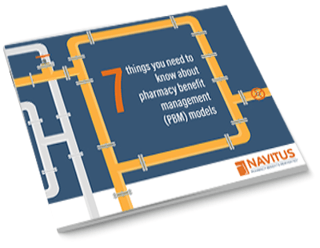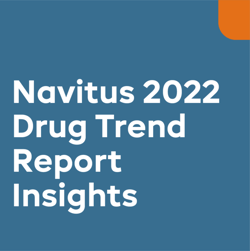Managing pharmacy benefits isn’t easy. At times you may feel like you’re the Thanksgiving wishbone being pulled in multiple directions as you struggle to balance robust benefits and costs. It’s enough to make anyone snap.

The good news is that, as the plan sponsor, it’s possible to get the information you need to make better benefit decisions that can help you meet your goals.
Although it can be challenging to evaluate your pharmacy benefit costs and savings, if you know the right questions to ask, you can gain a better understanding and possibly uncover some real savings opportunities.
Over the next few weeks, this three-part blog series will explore the 10 questions you should be asking about your Rx benefit plan to help you gain clarity into your pharmacy benefits and improve your plan performance.
To get started, consider the following questions:
WHAT KIND OF FINANCIAL MODEL DOES YOUR PHARMACY BENEFIT MANAGER (PBM) USE, AND WHICH MODEL DO YOU PREFER?
Not all PBMs are the same. Different PBMs operate under different financial models. The PBM’s financial model can have a major influence over the cost and savings opportunities that are available to your organization. The three PBM models available to plan sponsors today are traditional, hybrid and pass through. Let’s take a closer look into the models and their differences.
Traditional Spread Model
- Locks in contract terms with no flexibility to make mid-contract changes. These changes are often denied or modified to meet PBM spread pricing goals
- Allows the PBM to retain any improvements in negotiated network and manufacturer contracts
- Includes hidden revenue streams in all channels
- Offers a perceived cap on year-over-year costs with fixed guarantees
- Caps financial performance for the three-year contract, meaning that no upside improvements in pharmacy contracts or drug costs are shared
- Skews actual vs. contract discounts based on contract definitions
- Promotes high rebate products which generates higher spend
- Promotes PBM pharmacies (mail and specialty), although these may not always be the lowest cost channel
- Offers little to no transparency and limits claims audits
Transparent, Pass-Through Model
- Ensures 100% pass through of all rebates and discounts, including any upside or increased savings throughout the contract (i.e., retail, mail, specialty, etc.)
- Identifies all costs upfront and keeps expenses low and consistent over the three-year contract
- Allows clients to benefit from 100% of all pharmacy network and manufacturer contract improvements
- Guarantees zero spread
- Selects formulary products based on a ‘low-net-cost’ philosophy
- Establishes clinically-appropriate prior authorization (PA) approvals and step therapy to better manage cost
- Uses a third party to determine brand and generic definitions
- Applies a single MAC list across all distribution channels
- Allows for unrestricted audit rights down to the claim and invoice level
- Aligns incentives between plan sponsor, PBM and patient
Transparent Hybrid Model
- Combines traditional and pass-through financial models
- Provides some level of transparency
- Discloses some spread
- Allows for some spread in certain channels, such as mail and specialty
- Discloses some rebate retention (e.g., the PBM may keep 5-10%)
- Limits claims audit capabilities
DO YOU OR YOUR CONSULTANT HAVE A PROVEN EVALUATION METHODOLOGY FOR THE FINANCIAL MODEL YOU PREFER?
Evaluating potentially millions of dollars in drug spend is no small task. In fact, it’s very complex. That’s why you need more than a simple spreadsheet with gross Average Wholesale Price (AWP), discounts and rebates to truly calculate the cost. It’s important to note that no analysis can be accurate if the AWP starting point is incorrect. Every PBM offers a different formulary, which is a key cost driver. Each PBM’s formulary will result in a different drug mix, and a different AWP starting point. That’s why, establishing a correct baseline is critical to ensuring an accurate financial evaluation.
DO YOU OR YOUR CONSULTANT HAVE A PREFERENCE WHEN IT COMES TO PRICING SOURCES?
During the evaluation process, make sure that all PBMs are consistently using current vs. historical pricing to ensure an accurate comparison. Drug pricing should not be set by the PBM using a ‘proprietary algorithm’ based on its own internal strategies. Instead, it’s best if it’s based on industry standard sources, such as Medi-Span, First Databank, and Centers for Medicare and Medicaid Services (CMS) published national average drug acquisition cost.
To learn more about the differences between PBM models, check out our ebook, 7 Things You Need to Know About Pharmacy Benefit Management (PBM) Models.

Stay tuned for part two of 10 Questions You Should be Asking About Your Rx Benefits Plan, to find out what you need to know about contract definitions, rebate caveats and PBM revenue streams.





